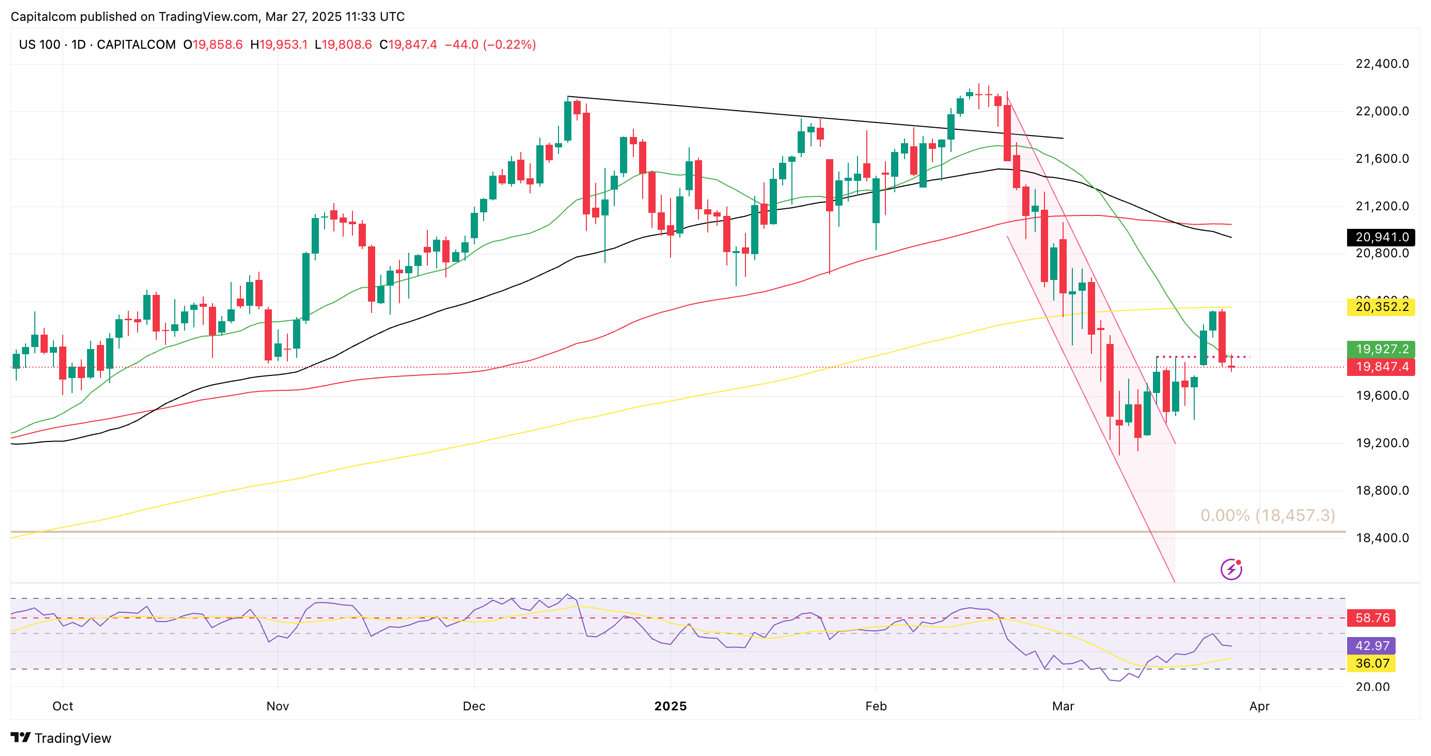Market Analysis: US stocks under pressure ahead of US PCE data
US stocks attempt to recover despite Trump announcing 25% tariffs on auto imports, US PCE in focus
US stocks are attempting to recover on Thursday morning after a sharp sell-off on Wednesday. Both the S&P 500 and Nasdaq 100 edged higher in pre-market trading as investors try to regain footing following renewed concerns triggered by President Trump’s tariff announcement.
The President confirmed a 25% tariff on all imported cars starting April 2, escalating fears of a global trade war. The move has intensified concerns about the impact on global growth and corporate profitability, particularly for carmakers in Mexico, Japan, South Korea, and Germany—key suppliers to the US market.
Trade War Concerns Weigh on Sentiment
Markets remain on edge as trade tensions build. Although there is growing belief that Trump's tariff strategy may be more targeted and less severe than initially feared, investor confidence remains fragile. The recent selloffs have had more momentum than any recovery attempts, and although sentiment has improved slightly, concerns about slowing growth and constrained corporate valuations persist.
Adding to investor caution, Moody’s issued a warning about the US fiscal outlook, highlighting risks from unfunded tax cuts, rising debt levels, and trade-related headwinds. As confidence in US assets declines, global reserve managers may increasingly look elsewhere, potentially weakening demand for US securities.
All Eyes on PCE Inflation Data
The market's next major test comes with the release of the US Personal Consumption Expenditures (PCE) index on Friday—the Federal Reserve's preferred inflation gauge. Expectations are for the headline figure to remain at 2.5% year-over-year, while the monthly increase is forecast at 0.3%. Core PCE is projected to edge higher from 2.6% to 2.7%.
How the data aligns with these forecasts will be critical. Despite the Fed's ongoing guidance for further rate cuts in 2025, an upside surprise in inflation could undermine investor confidence, especially since the immediate economic impact of tariffs is unlikely to be reflected in this month’s data. Any uptick would likely point to persistent underlying price pressures, potentially limiting the Fed’s policy flexibility.
Conversely, a softer-than-expected reading may help ease market concerns, reinforcing expectations for continued rate cuts and potentially reigniting bullish sentiment in equities.
Technical Picture: Nasdaq 100
Technically, the Nasdaq 100 has slipped back below the 20,000 mark after being rejected at the 200-day simple moving average (SMA). Previous resistance at 19,930 appears to be holding once again, with the daily candle retreating toward its opening level during the European session.
Traders are likely to remain cautious ahead of Friday’s data and the formal implementation of auto tariffs next week. The Relative Strength Index (RSI) also reflects indecision, having been rejected at the mid-line, reinforcing the lack of conviction in the recovery.
Nasdaq 100 daily chart

Past performance is not a reliable indicator of future results.